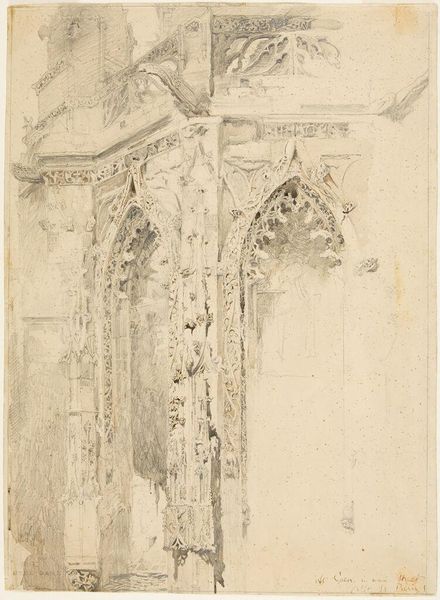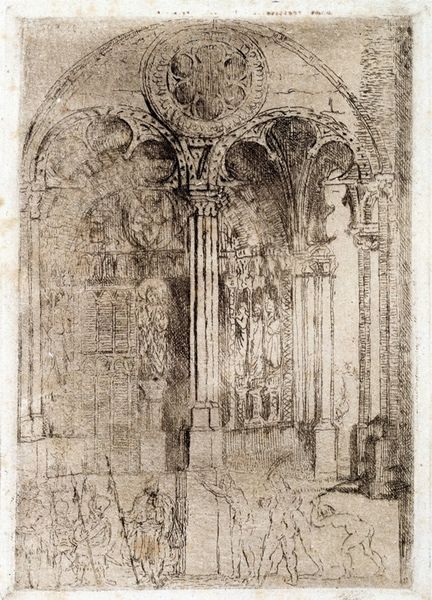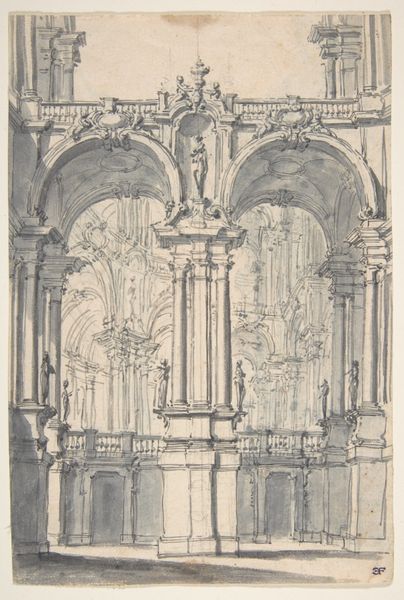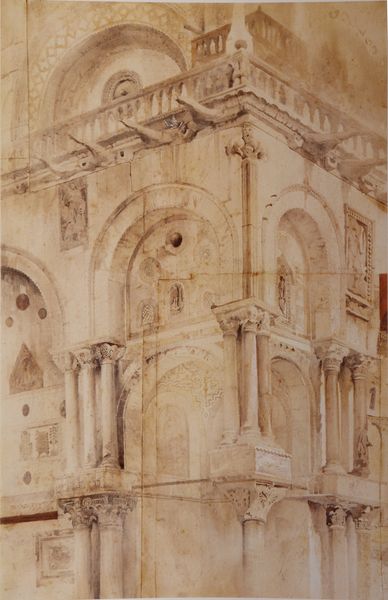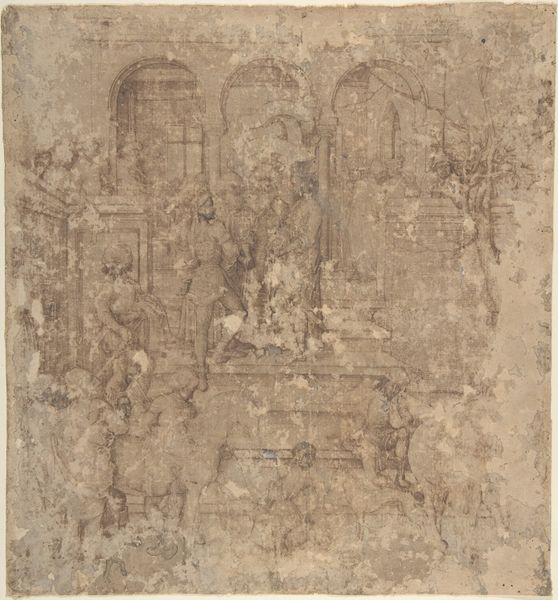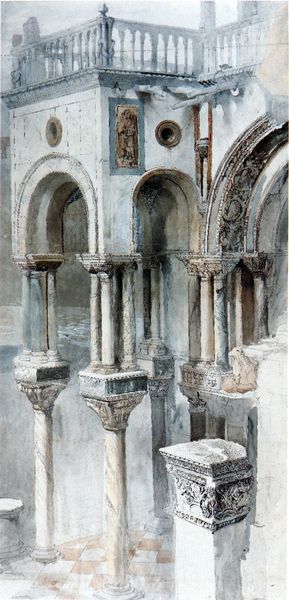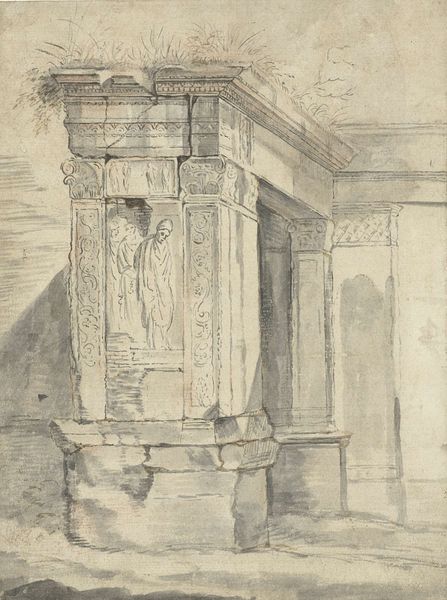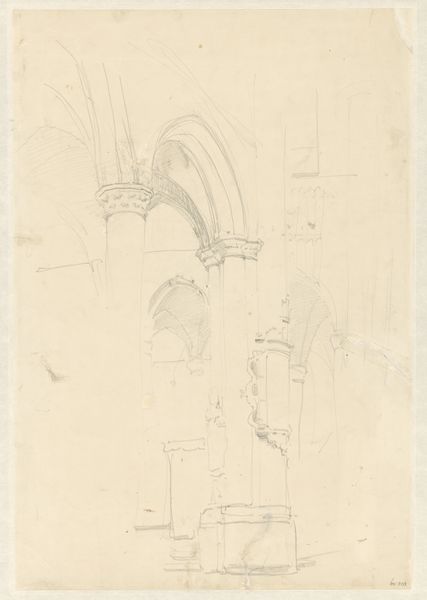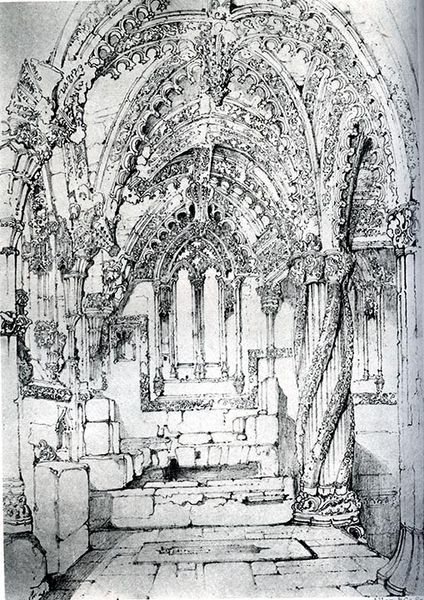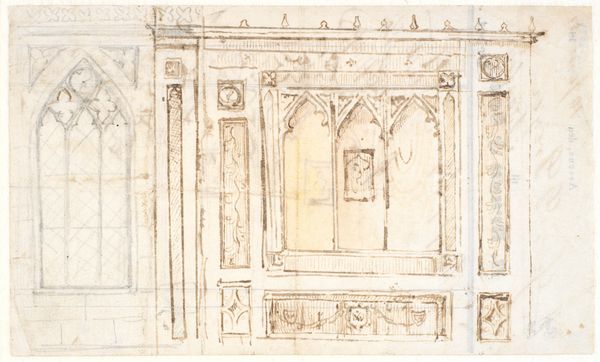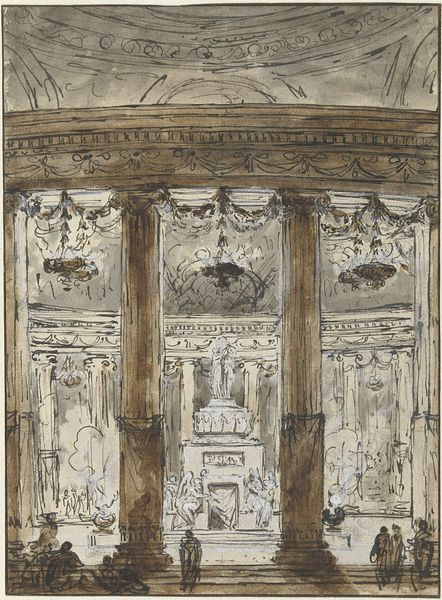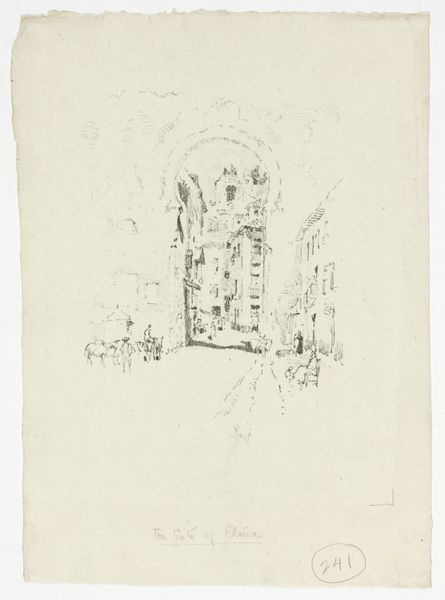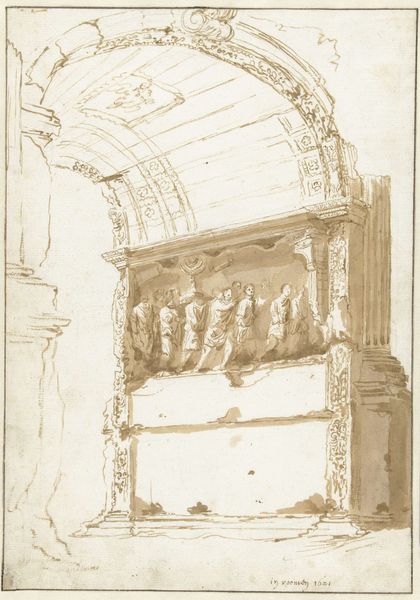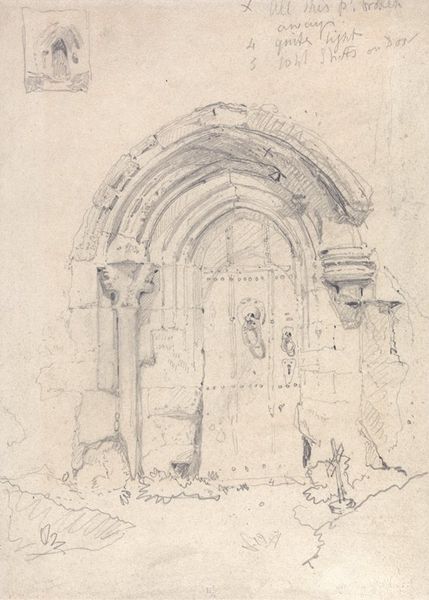
Copyright: Public domain
Editor: Here we have John Ruskin’s “Caen St Sauveur” created in 1848 using charcoal. It looks like a section of a gothic cathedral. The intricacy of the architectural detail, all in monochrome, creates this solemn and almost ghostly effect. What draws your eye in this piece? Curator: My gaze is immediately caught by the lace-like gothic arches. Think of the arch as a symbol—a threshold, a portal. What psychological space does this drawing invite us to enter? Is it a space of reverence? Perhaps even a memorial? Editor: A memorial? That's an interesting take. It feels more like documentation to me. Curator: Documentation, yes, but even documents can become memorials. Ruskin was deeply invested in preserving architectural heritage through his drawings. Consider the cultural context: 1848 was a year of revolutions. How might this drawing be an act of preserving memory against potential destruction? What kind of visual language can persist, despite physical structures that may crumble? Editor: So, the act of drawing itself becomes a form of preservation, a way of keeping cultural memory alive. The symbol becomes the building in a way? Curator: Precisely! Notice how the charcoal captures not just the shape, but the texture, the *feel* of the stone. It evokes a sense of timelessness and solidity. Look at the ornamentation. What might the floral motifs and pointed arches have symbolized to those who built this cathedral? What do they convey to us today? Editor: That connection to historical context really opens it up. I was focused on the immediate visual, but the symbolic weight adds so much more. Curator: Visual art invites that journey of interpretation. Hopefully now, listeners may bring this symbolic awareness to similar forms, experiencing and understanding our visual world with greater depth.
Comments
No comments
Be the first to comment and join the conversation on the ultimate creative platform.
